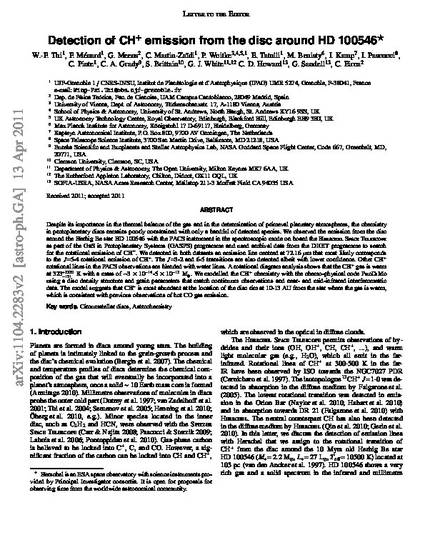
Despite its importance in the thermal balance of the gas and in the determination of primeval planetary atmospheres, the chemistry in protoplanetary discs remains poorly constrained with only a handful of detected species. We observed the emission from the disc around the Herbig Be star HD 100546 with the PACS instrument in the spectroscopic mode on board the Herschel Space Telescope as part of the GAS in Protoplanetary Systems (GASPS) programme and used archival data from the DIGIT programme to search for the rotational emission of CH+. We detected in both datasets an emission line centred at 72.16 μm that most likely corresponds to the J = 5−4 rotational emission of CH+. The J = 3−2 and 6−5 transitions are also detected albeit with lower confidence. Other CH+ rotational lines in the PACS observations are blended with water lines. A rotational diagram analysis shows that the CH+ gas is warm at 323+2320 −151 K with a mass of ∼3×10−14−5×10−12 M .We modelled the CH+ chemistry with the chemo-physical code ProDiMo using a disc density structure and grain parameters that match continuum observations and near- and mid-infrared interferometric data. The model suggests that CH+ is most abundant at the location of the disc rim at 10−13 AU from the star where the gas is warm, which is consistent with previous observations of hot CO gas emission.

This manuscript has been published in the journal Astronomy & Astrophysics . Please find the published version here (note that a subscription may be necessary to access this version):
http://www.aanda.org/articles/aa/abs/2011/06/aa16678-11/aa16678-11.html
EDP Sciences holds the copyright in this article.